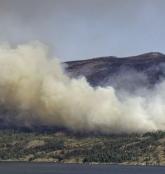As the insurance industry’s Dive In Festival continues to gather momentum, EXPOSURE examines the factors influencing the speed at which the diversity and inclusion dial is moving
September 2019 marks the fifth Dive In Festival, a global movement in the insurance sector to support the development of inclusive workplace cultures. An industry phenomenon, it has ballooned in size from a London-only initiative in 2015 attracting 1,700 people to an international spectacle spanning 27 countries and reaching over 9,000 people in 2018.
That the event should gather such momentum clearly demonstrates a market that is moving forward. There is now an industrywide acknowledgement of the need to better reflect the diversity of the customer base within the industry’s professional ranks.
The Starting Point
As Pauline Miller, head of talent development and inclusion (D&I) at Lloyd’s, explains, the insurance industry is a market that has, in the past, been slow to change its practitioner profile. “If you look at Lloyd’s, for example, for nearly three hundred years it was a men-only environment, with women only admitted as members in December 1969.
“It’s about bringing together the most creative group of people that represent different ways of thinking that have evolved out of the multiple factors that make them different”
Pauline Miller
Lloyd’s
“You also have to recognize that the insurance industry is not as far along the diversity and inclusion journey compared to other sectors,” she continues. “I previously worked in the banking industry, and diversity and inclusion had been an agenda issue in the organization for a number of years. So, we must acknowledge that this is a journey that will require multiple more steps before we really begin breaking down barriers.”
However, she is confident the insurance industry can quickly make up ground.
“By its very nature, the insurance market lends itself to the spread of the D&I initiative,” Miller believes. “We are a relationship-based business that thrives on direct contact, and our day-to-day activities are based upon collaboration. We must leverage this to help speed up the creation of a more diverse and inclusive environment.”
The positive effects of collaboration are already evident in how this is evolving. Initiatives like Dive In, a weeklong focus on diversity and inclusion, within other financial sectors have tended to be confined to individual organizations, with few generating the level of industrywide engagement witnessed within the insurance sector.
However, as Danny Fisher, global HR business partner and EMEA HR manager at RMS, points out, for the drive to gain real traction there must be marketwide consensus on the direction it is moving in.
“There is always a risk,” he says, “that any complex initiative that begins with such positive intent can become derailed if there is not an understanding of a common vision from the start, and the benefits it will deliver.
“There also needs to be better understanding and acknowledgement of the multitude of factors that may have contributed to the uniformity we see across the insurance sector. We have to establish why this has happened and address the flaws in our industry contributing to it.”
It can be argued that the insurance industry is still composed of a relatively homogeneous group of people. In terms of gender disparity, ethnic diversity, and people of different sexual orientations, from different cultural or social backgrounds, or with physical or mental impairments, the industry recognizes a need to improve.
Diversity is the range of human differences, including but not limited to race, ethnicity, gender, gender identity, sexual orientation, age, social class, physical ability or attributes, religious or ethical values system, national origin, and political beliefs.
“As a market,” Miller agrees, “there is a tendency to hire people similar to the person who is recruiting. Whether that’s someone of the same gender, ethnicity, sexual orientation or from the same university or social background.”
“You can end up with a very uniform workforce,” adds Fisher, “where people look the same and have a similar view of the world, which can foster ‘groupthink’ and is prone to bias and questionable conclusions. People approach problems and solutions in the same way, with no one looking at an alternative — an alternative that is often greatly needed. So, a key part of the diversity push is the need to generate greater diversity of thought.”
The challenge is also introducing that talent in an inclusive way that promotes the effective development of new solutions to existing and future problems. That broad palette of talent can only be created by attracting and retaining the best and brightest from across the social spectrum within a framework in which that blend of skills, perspectives and opinions can thrive.
“Diversity is not simply about the number of women, ethnicities, people with disabilities or people from disadvantaged backgrounds that you hire,” believes Miller. “It’s about bringing together the most creative group of people that represent different ways of thinking that have evolved out of the multiple factors that make them different.”
Moving the Dial
There is clearly a desire to make this happen and strong evidence that the industry is moving together. Top-level support for D&I initiatives coupled with the rapid growth of industrywide networks representing different demographics are helping firm up the foundations of a more diverse and inclusive marketplace.
But what other developments are needed to move the dial further?
“We have to recognize that there is no ‘one-size-fits-all’ to this challenge,” says Miller. “Policies and strategies must be designed to create an environment in which diversity and inclusion can thrive, but fundamentally they must reflect the unique dynamics of your own organization.
“We also must ensure we are promoting the benefits of a career in insurance in a more powerful and enticing way and to a broader audience,” she adds. “We operate in a fantastic industry, but we don’t sell it enough. And when we do get that diversity of talent through the door, we have to offer a workplace that sticks, so they don’t simply walk straight back out again.
“For example, someone from a disadvantaged community coming through an intern program may never have worked in an office environment before, and when they look around are they going to see people like themselves that they can relate to? What role models can they connect with? Are we prepared for that?”
For Fisher, steps can also be taken to change processes and modernize thinking and habits. “We have to be training managers in interview and evaluation techniques and discipline to keep unconscious bias in check. There has to be consistency with meaningful tests to ensure data-driven hiring decisions.
“At RMS, we are fortunate to attract talent from around the world and are able to facilitate bringing them on board to add further variety in solving for complex problems. A successful approach for us, for example, has been accessing talent early, often prior to their professional career.”
There is, of course, the risk that the push for greater diversity leads to a quota-based approach.
“Nobody wants this to become a tick-box exercise,” believes Miller, “and equally nobody wants to be hired simply because they represent a particular demographic. But if we are expecting change, we do need measurements in place to show how we are moving the dial forward. That may mean introducing realistic targets within realistic timeframes that are monitored carefully to ensure we are on track.
“Ultimately,” she concludes, “what we are all working to do is to create the best environment for the broadest spectrum of people to come into what is a truly amazing marketplace. And when they do, offering a workplace that enables them to thrive and enjoy very successful careers that contribute to the advancement of our industry. That’s what we all have to be working toward.”






